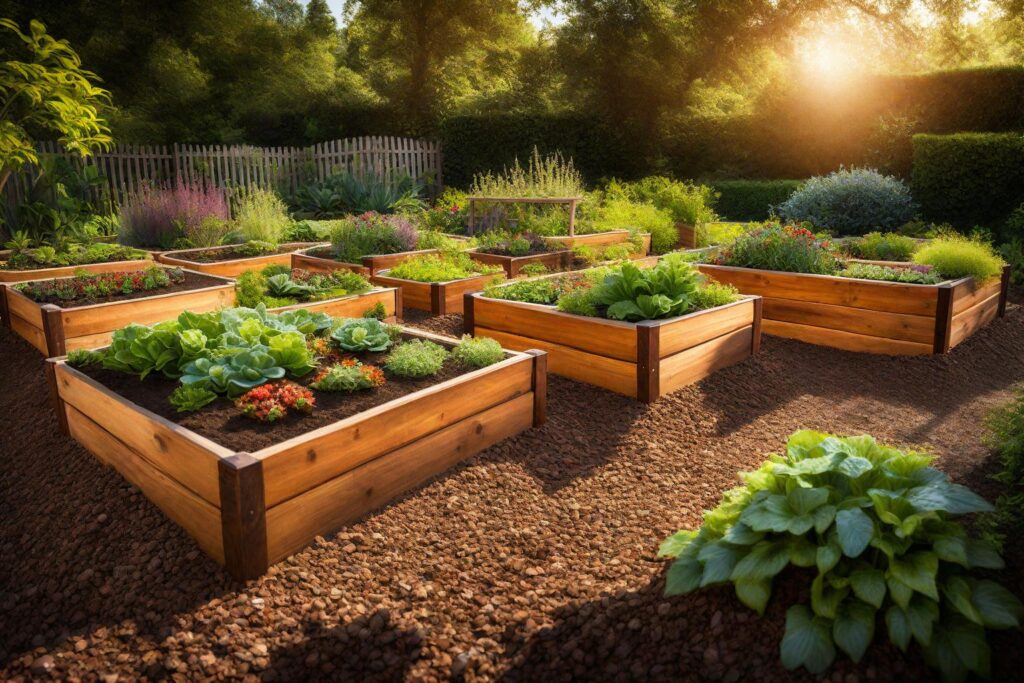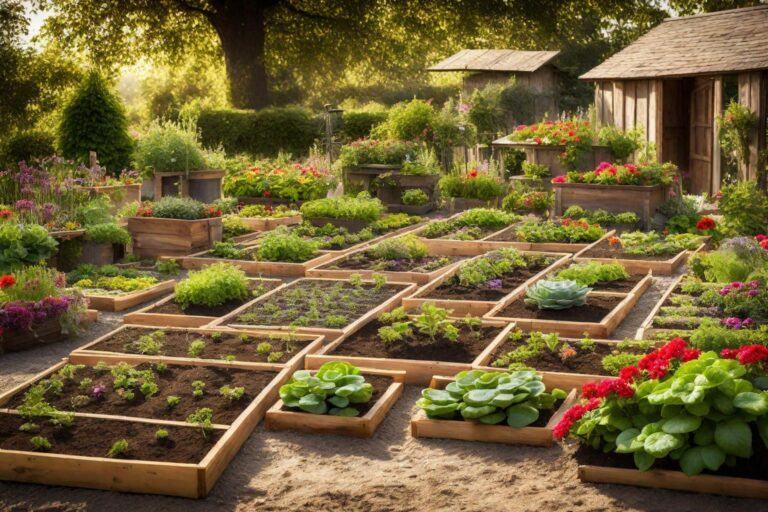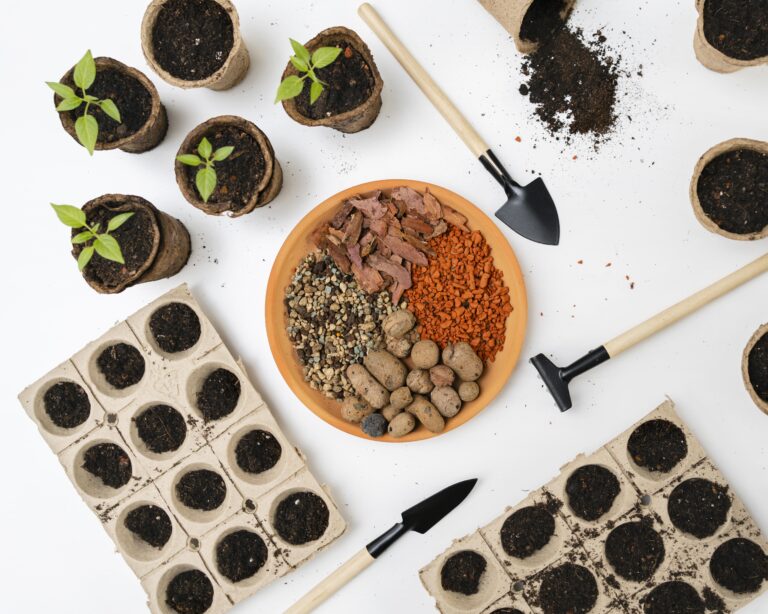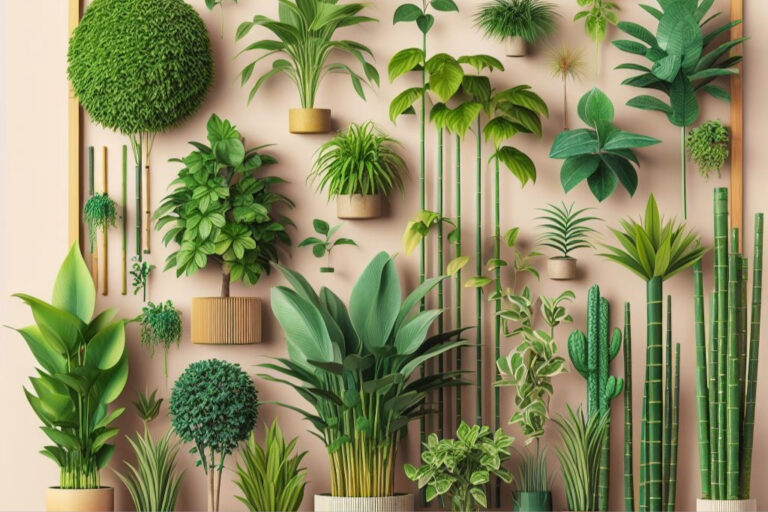how to build raised garden bed cheap
“Unlock the secrets to successful gardening with our comprehensive guide on building raised garden bed cheap. From choosing the right materials like cedar or recycled options to expert tips on watering, soil health, and strategic planting, this article is your go-to resource for a bountiful garden. Whether you’re a novice or seasoned gardener, embark on a journey of sustainability, creativity, and thriving greenery. Start crafting your garden oasis today!”
Defining Raised Garden Bed
Raised garden beds are elevated planting areas constructed above ground level, usually framed with wood, stone, or other materials. These beds offer a contained space for gardening, distinct from traditional in-ground planting.
Advantages of Raised Garden Beds
Beyond their cost-effective nature, raised garden beds present a multitude of advantages. They create microclimates conducive to plant growth by enhancing soil warmth and drainage, fostering healthier root systems and increased yields.
Furthermore, they serve as an effective barrier against invasive weeds, minimizing the labor-intensive task of weeding. Their raised structure also deters pests, offering better control over garden intruders without resorting to chemical solutions.
Microclimate Advantages
Raised garden beds create a controlled microclimate, optimizing growing conditions for plants. The elevated position facilitates quicker soil warming in the spring, extending the growing season. This warmth promotes healthier root development and better nutrient absorption, fostering robust plant growth and higher yields.
Weed and Pest Management Benefits
One of the significant perks of raised beds is their efficiency in weed control. The raised structure reduces weed intrusion, minimizing the competition for nutrients and allowing for more focused care on cultivated plants. Additionally, the contained space makes pest management more manageable, decreasing the risk of infestation and the need for chemical intervention.
Accessibility for All Gardeners
Raised beds cater to gardeners of diverse ages and physical abilities. Their raised design eliminates the need for excessive bending or kneeling, making gardening tasks more accessible and comfortable. This inclusivity fosters a welcoming environment for all enthusiasts, encouraging a wider range of people to enjoy the pleasures of gardening without physical strain.
Choosing Materials for Raised Garden Beds
Wood Types: Cedar, Pine, or Redwood
Wood remains a popular choice for constructing raised beds due to its availability and versatility. Cedar, known for its natural resistance to decay and insects, stands as a premium choice but may come at a higher cost. Pine, more economical, requires proper treatment to enhance its longevity. Redwood, another durable option, boasts natural resistance to rot, making it suitable for long-term use.
Alternatives: Recycled Materials, Concrete Blocks, or Metal
For the eco-conscious gardener, exploring recycled materials such as old railway sleepers, discarded pallets, or salvaged wood offers an environmentally friendly approach. Concrete blocks present a sturdy alternative, providing durability and a modern aesthetic. Metal options, like galvanized steel or corrugated metal, offer durability and a sleek look, but their heat retention properties should be considered for plant health in warmer climates.
Sustainability and Durability Factors
When selecting materials, consider their environmental impact and longevity. Opting for sustainably sourced or recycled materials contributes to eco-friendliness. Durability is crucial for longevity; materials that resist decay, corrosion, and weathering ensure the raised bed’s structural integrity over time, reducing the need for frequent replacements and the associated costs.
Tools Required for Raised Garden Beds
Essential Tools for Building and Maintenance
For construction, you’ll need basic carpentry tools like a saw, hammer, measuring tape, and a leveler to ensure precise dimensions and stability. Screws or nails, a drill or screwdriver, and a square will aid in assembling the bed’s frame securely.
Maintenance tools include a rake or hand cultivator for soil aeration, a watering can or hose for irrigation, and a pair of gardening gloves for hands-on care. Additionally, a trowel, pruning shears, and a hand weeder are valuable for plant care and upkeep.
Recommendations for Novice Gardeners
For beginners, starting with a simple toolkit that includes a hand trowel, gloves, and a watering can is ideal. Gradually add essential tools as you gain experience and take on more gardening projects. Consider investing in quality tools that ensure ease of use and durability, contributing to a more enjoyable gardening experience.
Step-by-Step Guide for Raised Garden Beds
Frame Construction:
Begin by choosing the desired location for your raised bed. Use wood, concrete blocks, or other chosen materials to construct the frame. Ensure sturdiness by securing corners and edges with screws or nails. Common dimensions range from 4×4 feet to 4×8 feet, but tailor the size to your available space and gardening needs.
Soil Composition:
Aim for a blend of quality garden soil, compost, and organic matter for nutrient-rich soil. Avoid using soil from your garden, as it may contain weed seeds or diseases. Mix these components thoroughly before filling the bed.
Filling the Bed:
Layer the prepared soil mix into the raised bed, filling it to the brim. Smooth and level the soil surface, ensuring it’s loose and well-aerated for optimal plant root growth.
Planting in Raised Beds:
When planting, arrange crops according to their space requirements and growth habits. Follow recommended planting distances between seeds or transplants to avoid overcrowding.
Companion Planting:
Explore the benefits of companion planting by pairing compatible plant species. For instance, planting marigolds alongside vegetables can deter pests, while certain herbs enhance the flavor of neighboring plants. Research companion planting guides for optimal pairings.

Cost-Effective Tips for Raised Garden Beds
Local Material Suppliers:
Explore local hardware stores, lumberyards, or garden centers for deals on materials like untreated lumber, which can be more budget-friendly. Often, these establishments offer end-of-season sales or discounts on bulk purchases.
Repurposing Materials:
Get creative by repurposing items like old pallets, shipping crates, or discarded wood from renovation projects. Check online platforms or local community groups where people often give away or sell used materials at lower prices.
Economical Alternatives:
Consider cost-effective alternatives such as using cinder blocks, bricks, or even large stones as bed borders instead of pricier wood. These materials not only offer durability but also add a unique aesthetic to your garden.
Vertical Gardening:
Optimize space and reduce material costs by incorporating vertical gardening techniques. Utilize walls or trellises for climbing plants like cucumbers or beans, minimizing the need for larger bed spaces.
Upcycling Containers:
Repurpose containers like old barrels, buckets, or even tires as smaller raised beds for herbs or smaller plants. They’re often available at minimal cost or for free and can be creatively adapted for gardening purposes.
Maintenance Tips for Raised Garden Beds
Watering Practices:
Ensure consistent moisture by watering your raised bed deeply but less frequently. Aim to water at the base of plants to encourage deep root growth and reduce evaporation. Consider using drip irrigation systems or soaker hoses for efficient water delivery.
Soil Maintenance:
Regularly monitor soil moisture levels and adjust watering as needed. Mulching with organic materials like straw or wood chips helps retain moisture, regulates soil temperature, and suppresses weed growth. Additionally, regularly aerate the soil to enhance its structure and nutrient absorption.
Winter Preparation:
In colder climates, prepare raised beds for winter by clearing debris, applying mulch, and covering with protective material like burlap or row covers to shield plants from frost. Consider planting cold-hardy vegetables or cover crops to enrich the soil during winter.
Summer Care:
In hotter climates, implement shading methods such as using shade cloth or strategically positioning taller plants to protect more delicate ones from scorching sun. Increase watering frequency during hot spells and provide afternoon shade to prevent soil drying out.
Weed Prevention:
Regularly inspect and hand-pick weeds to prevent them from competing with your plants for nutrients. Installing a weed barrier at the base of the bed or applying organic mulch helps smother weeds while preserving soil moisture.
Bed Longevity:
To prolong the life of your raised bed, inspect for signs of wear or deterioration. Treat or replace any deteriorating materials promptly. Rotate crops annually to prevent nutrient depletion in the soil and maintain bed health.
Creative Design Ideas for Raised Garden Beds
Tiered Beds: Create visual interest and maximize space by constructing tiered or cascading raised beds. Gradually stepping the beds on slopes or terraced landscapes not only adds dimension but also provides ideal growing conditions for various plants.
Curved Designs: Embrace organic shapes and curves when designing raised beds. Curved or wavy borders soften the landscape, adding an artistic touch while allowing for natural flow and movement within the garden.
Color Palette: Play with color schemes by strategically planting vibrant flowers, foliage, or vegetables. Utilize contrasting or complementary colors to create visually appealing arrangements within the raised beds.
Mixed Planting Styles: Integrate ornamental plants with edible ones in your raised beds. Pairing vegetables, herbs, or fruit-bearing plants alongside colorful flowers not only adds beauty but also maximizes productivity in limited spaces.
Vertical Gardening Accents: Enhance aesthetics by incorporating vertical elements like trellises or arches. These structures not only support climbing plants but also add architectural interest and verticality to the garden design.
Integrate Hardscape Features: Combine raised beds with hardscape elements like pathways, seating areas, or decorative borders. Integrate materials such as stone, gravel, or decorative edging to delineate and enhance the raised bed’s visual appeal.
Conclusion
In conclusion, the benefits of raised garden beds extend far beyond their cost-effectiveness. They serve as miniature havens, fostering optimal conditions for plant growth and offering an array of advantages.
From creating a controlled microclimate that nurtures healthier plants to simplifying weed and pest management, raised beds elevate gardening experiences. Their accessibility opens doors for all enthusiasts, irrespective of age or physical abilities, enabling everyone to partake in the joys of gardening.







